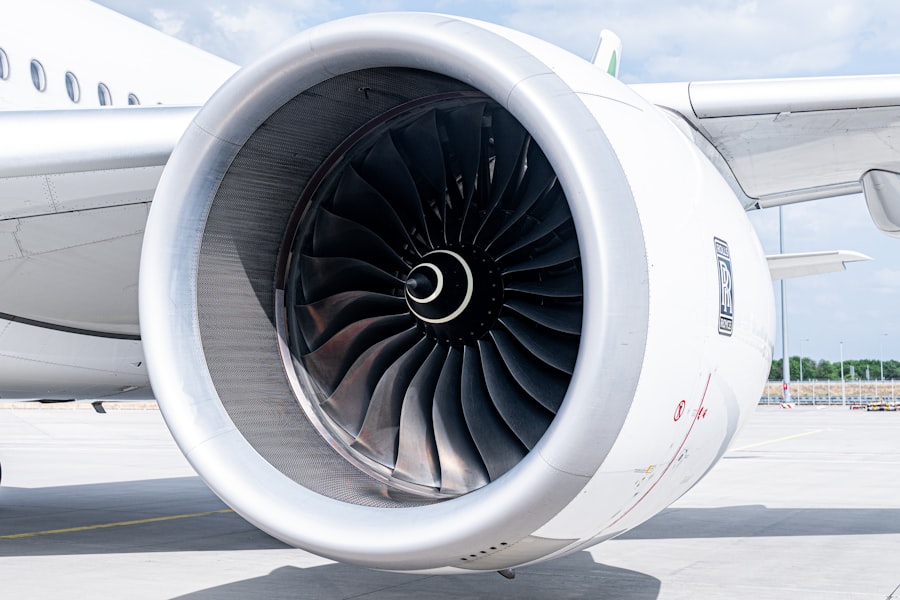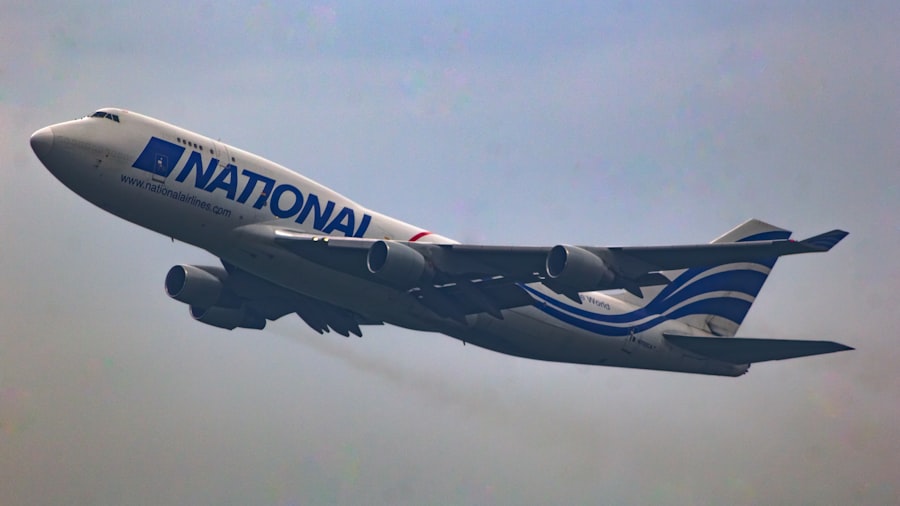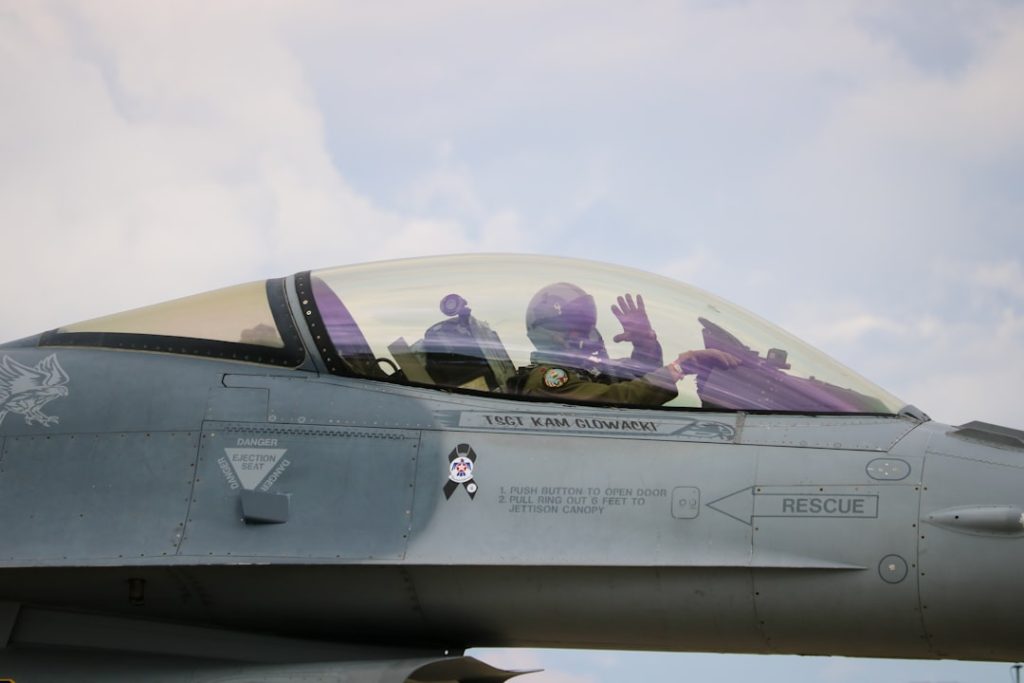Electric propulsion systems represent a transformative shift in aerospace technology, offering a cleaner and more efficient alternative to traditional chemical propulsion. These systems utilize electric power to generate thrust, often through ion or Hall-effect thrusters, which accelerate ions to produce propulsion. The advantages of electric propulsion are particularly pronounced in space applications, where the efficiency of fuel usage can significantly extend mission durations and reduce costs.
For instance, NASA’s Dawn spacecraft, which utilized ion propulsion, was able to explore the asteroid belt and visit two celestial bodies, Vesta and Ceres, thanks to its efficient use of propellant. In addition to space exploration, electric propulsion is making strides in the aviation sector. Companies like magniX are developing electric engines for regional aircraft, aiming to reduce carbon emissions and operational costs.
The ePlane Company is also working on electric vertical takeoff and landing (eVTOL) aircraft, which promise to revolutionize urban air mobility. These advancements not only highlight the potential for reduced environmental impact but also pave the way for quieter operations, which is increasingly important in densely populated areas. As battery technology continues to improve, the range and performance of electric propulsion systems are expected to expand, making them a viable option for a broader range of aviation applications.
Key Takeaways
- Electric propulsion systems are revolutionizing the aviation industry by providing more efficient and environmentally friendly alternatives to traditional fuel-based engines.
- Advanced materials and manufacturing techniques are enabling the development of lighter and stronger aircraft components, leading to improved performance and fuel efficiency.
- Autonomous flight systems are paving the way for safer and more efficient air travel by reducing human error and allowing for more precise navigation and control.
- Space tourism is becoming a reality with the development of commercial spaceflight vehicles, offering the opportunity for civilians to experience space travel.
- Hypersonic flight technology is pushing the boundaries of speed and efficiency in aviation, potentially revolutionizing long-distance travel in the future.
Advanced Materials and Manufacturing Techniques
The aerospace industry is undergoing a significant transformation driven by advanced materials and innovative manufacturing techniques. Lightweight materials such as carbon fiber reinforced polymers (CFRP) and titanium alloys are increasingly being used in aircraft design to enhance performance while reducing weight. For example, the Boeing 787 Dreamliner incorporates approximately 50% composite materials by weight, resulting in improved fuel efficiency and reduced maintenance costs.
These materials not only contribute to weight savings but also offer superior strength-to-weight ratios and resistance to corrosion, which are critical for the longevity and reliability of aircraft. In parallel with advancements in materials, manufacturing techniques such as additive manufacturing (3D printing) are revolutionizing how components are produced. This technology allows for the creation of complex geometries that were previously impossible or prohibitively expensive to manufacture using traditional methods.
For instance, GE Aviation has successfully produced fuel nozzles for jet engines using 3D printing, resulting in parts that are lighter and more efficient than their traditionally manufactured counterparts. The ability to rapidly prototype and produce parts on-demand also streamlines supply chains and reduces lead times, enabling manufacturers to respond more swiftly to market demands. As these technologies continue to evolve, they promise to enhance the performance, safety, and sustainability of future aerospace vehicles.
Autonomous Flight Systems

The development of autonomous flight systems is poised to redefine aviation by enhancing safety, efficiency, and operational capabilities. These systems leverage advanced algorithms, artificial intelligence (AI), and sensor technologies to enable aircraft to operate with minimal human intervention. For instance, companies like Boeing and Airbus are investing heavily in autonomous technologies for commercial aviation, with the goal of reducing pilot workload and improving flight safety.
The integration of AI allows for real-time data analysis and decision-making, enabling aircraft to adapt to changing conditions during flight. Moreover, autonomous flight systems are not limited to commercial airliners; they are also being explored for cargo transport and urban air mobility solutions. Companies such as Zipline have successfully deployed autonomous drones for medical supply delivery in remote areas, demonstrating the potential for unmanned aerial vehicles (UAVs) to operate safely in complex environments.
As regulatory frameworks evolve to accommodate these technologies, the potential for fully autonomous passenger flights becomes increasingly feasible. The implications of this shift extend beyond operational efficiency; they also raise important questions about safety protocols, cybersecurity measures, and the future role of human pilots in aviation.
Space Tourism
| Company | Price | Duration |
|---|---|---|
| SpaceX | 55 million | 5 days |
| Virgin Galactic | 250,000 | 2 hours |
| Blue Origin | 200,000 – 300,000 | 11 minutes |
Space tourism is rapidly emerging as a new frontier in the aerospace industry, driven by advancements in technology and a growing interest from private individuals seeking extraordinary experiences beyond Earth’s atmosphere. Companies like SpaceX, Blue Origin, and Virgin Galactic are at the forefront of this burgeoning market, each offering unique approaches to suborbital and orbital travel. For instance, Blue Origin’s New Shepard spacecraft is designed for short suborbital flights that provide passengers with a few minutes of weightlessness and stunning views of Earth from space.
This experience is marketed as an adventure for those who can afford it, with ticket prices reaching hundreds of thousands of dollars. The implications of space tourism extend beyond mere adventure; they also have the potential to stimulate advancements in aerospace technology and infrastructure. As more private companies enter the market, competition will likely drive innovation in spacecraft design, safety protocols, and customer experience.
Furthermore, the influx of private investment into space tourism could lead to broader developments in space exploration and research. For example, as more individuals travel to space, there may be increased interest in scientific research conducted in microgravity environments, potentially leading to breakthroughs in various fields such as medicine and materials science. The growth of this industry raises questions about sustainability and accessibility; as it evolves, stakeholders will need to address environmental impacts and ensure that space remains a domain accessible to all.
Hypersonic Flight
Hypersonic flight—defined as travel at speeds exceeding Mach 5—represents one of the most ambitious goals in aerospace engineering. The potential applications of hypersonic technology are vast, ranging from military applications to commercial air travel that could drastically reduce flight times across the globe. For instance, the U.S. military is investing heavily in hypersonic weapons systems that can evade traditional missile defense systems due to their speed and maneuverability. Programs like DARPA’s Tactical Boost Glide aim to develop vehicles capable of sustained hypersonic flight, showcasing the strategic advantages such technology could provide. In the commercial sector, companies like Hermeus are exploring hypersonic passenger travel with the goal of significantly reducing transcontinental flight times. A flight from New York to London that currently takes around seven hours could potentially be completed in under two hours with hypersonic technology. However, achieving hypersonic flight presents numerous engineering challenges, including thermal management due to extreme heat generated at such speeds and ensuring structural integrity during flight. Research into advanced materials capable of withstanding these conditions is ongoing, as is the development of propulsion systems that can efficiently operate at hypersonic speeds. As these challenges are addressed, hypersonic flight could revolutionize global travel.
Sustainable Aviation

Sustainable aviation is becoming an imperative focus within the aerospace industry as concerns over climate change intensify. The aviation sector is responsible for a significant portion of global greenhouse gas emissions; thus, efforts are underway to develop more sustainable practices and technologies. One promising avenue is the development of sustainable aviation fuels (SAFs), which can be produced from renewable resources such as agricultural waste or even carbon captured from the atmosphere.
Airlines like United Airlines have begun investing in SAF production facilities as part of their commitment to reducing their carbon footprint. In addition to SAFs, electric and hybrid-electric propulsion systems are gaining traction as viable alternatives to traditional jet engines. Companies like Airbus are exploring hybrid-electric designs that combine conventional engines with electric motors powered by batteries or fuel cells.
This approach not only reduces emissions but also has the potential to lower operating costs over time. Furthermore, advancements in air traffic management systems can optimize flight paths and reduce fuel consumption by minimizing unnecessary delays and diversions during flights. As regulatory bodies set stricter emissions targets for airlines worldwide, the push for sustainable aviation will likely accelerate innovation across all facets of the industry.
Urban Air Mobility
Urban air mobility (UAM) is an emerging concept that envisions a future where aerial vehicles operate within urban environments to alleviate traffic congestion and provide rapid transportation solutions. The rise of eVTOL aircraft has been a catalyst for this movement; these vehicles are designed for short-distance travel within cities and can take off and land vertically, making them suitable for urban settings where space is limited. Companies like Joby Aviation and Archer are developing eVTOL prototypes that aim to provide on-demand air taxi services.
The implementation of UAM faces several challenges that must be addressed before it can become a reality. Regulatory frameworks need to be established to ensure safety and manage air traffic within urban airspace effectively. Additionally, infrastructure such as vertiports—designated landing zones for eVTOLs—must be developed alongside public acceptance of aerial transportation solutions.
Pilot programs are being initiated in various cities worldwide to test UAM concepts; for example, Los Angeles has been identified as a key testing ground due to its existing traffic issues and commitment to innovative transportation solutions. As technology matures and regulatory hurdles are overcome, UAM has the potential to transform urban transportation dynamics significantly.
Satellite Constellations
The deployment of satellite constellations is revolutionizing global communications and data services by providing widespread coverage and high-speed internet access across vast areas. Companies like SpaceX with its Starlink project have launched thousands of small satellites into low Earth orbit (LEO) with the goal of creating a network capable of delivering broadband internet service even in remote regions where traditional infrastructure is lacking. This initiative not only aims to bridge the digital divide but also has implications for various sectors including education, healthcare, and disaster response.
The technical challenges associated with satellite constellations include managing orbital debris and ensuring reliable communication between satellites while minimizing latency for end-users. Advanced technologies such as phased array antennas and optical inter-satellite links are being developed to enhance connectivity and performance within these networks. Moreover, regulatory considerations regarding spectrum allocation and coordination among different satellite operators are critical as more players enter this burgeoning market.
As satellite constellations continue to expand their capabilities, they hold the promise of transforming how we connect globally while enabling new applications such as Internet of Things (IoT) connectivity and real-time data analytics across industries.


